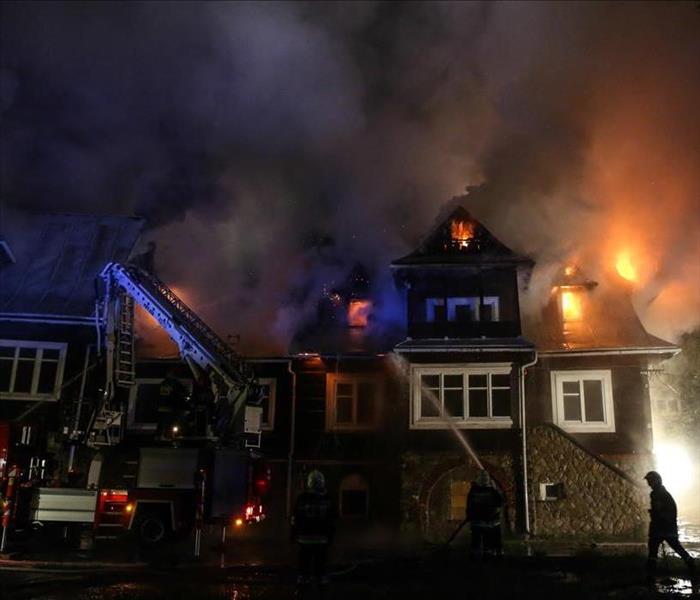How To Clean Household Contents Post-Fire
8/18/2021 (Permalink)
When your Layton, UT, home sustains a fire, it's not only the structure of the house itself that is affected, and not only the direct burning from the fire that causes damage. In addition to the fire consuming many, if not most, materials, soot residue, and smoke can affect what the fire didn't directly impact. How do you know what to do about the contents of your home after a fire? Can anything be salvaged? Fortunately, even though the situation probably seems hopeless, all hope is not lost. Some items are salvageable, thanks to content restoration methods like dry-cleaning and odor removal. Here are some everyday household items and how to best manage them after a fire to keep everyone safe and salvage as much as possible in the process.
1. Non-Perishable Food
You may believe that sealed, non-perishable food is still safe after a fire, but it could be very toxic. Open containers must be discarded. Even food in unopened aluminum cans can be susceptible to toxic fumes. Inspect every item in your kitchen for heat damage, smoke, firefighting chemical damage, and water. If you are unsure something has come in contact with any of these contaminants, you must throw it out.
2. Perishable Food
If smoke and soot have penetrated the refrigerator's seals, everything in the refrigerator must be discarded. Additionally, in many instances, a house will lose electricity during a fire, which means the refrigerator will be without power for some amount of time. In this case, it's critical to throw away all the food in the refrigerator and any defrosted food from the freezer.
3. Burned Clothing and Textiles
Burned or charred clothing and other textiles are not salvageable. Some of these materials that have only been exposed to heat, smoke, and soot can be saved using proper cleaning and disinfection methods. Fire restoration professionals are your best bet for keeping as much as possible and returning it as much as possible to its original condition. Remediation experts have dry-cleaning and other specialized equipment to thoroughly clean, sanitize and remove odors. Content storage is also an often necessary service they provide.
4. Appliances and Electronics
Smoke can seriously damage electronic components, so some or all of your appliances and electronics are likely to be unsalvageable. Smoke particles act as conductors which disrupt the electrical pathways, causing the unit to short-circuit. Due to their chemical makeup, smoke and soot are extremely challenging to remove, especially from porous materials. In addition, the effects can be cumulative, only progressing as the smoke and soot are left to linger.
5. Medicine and Cosmetics
Any medications and cosmetics that have been exposed to heat, smoke, soot, or fire extinguishing material must be discarded. It's dangerous to use these products after heat exposure because heat can alter the chemical composition of the products. If these chemicals are ingested or absorbed by a person or animal's skin, they could be toxic.
Fire can cause several different types of damage to a home's contents. Unfortunately, most items are not going to be salvageable. However, dry-cleaning and other professional content cleaning methods can be effective and are worth trying, especially for those irreplaceable and sentimental pieces.





 24/7 Emergency Service
24/7 Emergency Service
